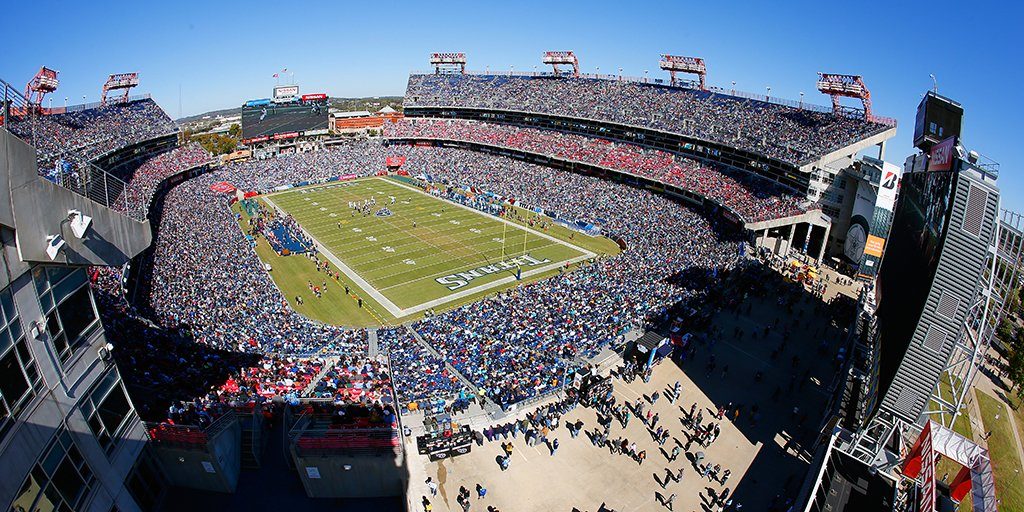Next week, San Diego voters will head to the polls to decide the fate of a stadium/convention center for the San Diego Chargers.
In recent months, it has become apparent that the proposal-which is on the ballot as Measure C-is unlikely to pass. It will need approval from two-thirds of voters and faces a few other issues, including criticism from the city’s tourism sector-which objects to a proposed hotel taxes increase to pay for the facility.
However, by merely being on the ballot, Measure C adds to the NFL’s history of stadium referendums. As shown by research from Marquette University, ballot propositions for NFL stadiums have been common since the mid 1990’s, delivering a wide array of results.
Perhaps most notably, past NFL ballot measures include at least two instances in which the proposal approved, only for it to be significantly altered or scratched. In 1997, San Francisco voters authorized two measures that cleared the way for the new San Francisco 49ers stadium at Candlestick Point.
For nearly a decade, proposals for the site were considered-including one for a stadium that could modified to host the Olympics. However, the 49ers were never sold on the Candlestick site and eventually set their sights on Santa Clara. In 2010 Santa Clara voters approved their own ballot measure, clearing the way for Levi’s Stadium.
The Cleveland Browns once seemed destined for a different fate-one in which Cleveland Municipal Stadium would receive renovations from extended sin tax funding. In 1995 Cuyahoga County voters were to consider such a plan, but one day before the election, owner Art Modell announced he was moving the Browns to Baltimore.
Despite Modell’s announcement, voters approved the plan by a wide margin. Even as Modell stuck to his decision to relocate the Browns, Cleveland moved ahead with a demolition of Cleveland Municipal Stadium and built a new facility on the same site. That allowed for the Browns to return as an expansion franchise in 1999.
There was also an interesting case in 2013, when Miami-Dade County voters were to consider a referendum concerning public funding for Sun Life Stadium upgrade. Miami Dolphins owner Stephen Ross spent money campaigning for the referendum, which became moot after the state legislature failed to vote on a funding plan. However, the measure remained on the ballot, where it failed. Renovations to the facility-now known as Hard Rock Stadium-were eventually finalized after Ross agreed to pay for bulk of the project.
Last week, our sister site Ballpark Digest looked at the history of ballpark referendums , and found instances where football and baseball facilities were tied to the same ballot measure. A plan in Pittsburgh to construct facilities for both the Steelers and Pirates, as well as an expanded convention center, called for a sales tax increase in 11 counties. That 1997 initiative was rejected by voters, but the project resurfaced with a new funding model and finalized by the State of Pennsylvania in 1999.
In 1996, Hamilton County voters authorized the construction of the Cincinnati Bengals‘ Paul Brown Stadium and the Reds’ Great American Ballpark through a 0.5% sales tax increase. Detroit voters also approved both the Tigers’ Comerica Park and the Lions’ Ford Field in 1996.
There are also some other examples of NFL stadiums being included in referendums that packaged multiple projects. The Seattle Seahawks benefited from a 1997 statewide ballot initiative that used a variety of public funding sources-including an extension on a hotel tax and new lottery games-to fund CenturyLink Field, along with a parking deck, an exhibition hall, and the creation of the Washington Public Stadium Authority. With prospective Seahawks owner Paul Allen funding the election and waging a heavy pro-stadium campaign, the initiative passed with 51.15% of the vote, with some citing the addition of an MLS franchise to the stadium as a reason for its boost at the polls.
Voters in Arizona followed through with a large referendum in 2000, which authorized the state to follow through a $1.8 billion plan that leveraged funds from increased hotel and car rental taxes. One of the major components of this proposal was the University of Phoenix Stadium, a facility in Glendale that became the home of the Arizona Cardinals. These funds would also be used to pay for new spring training complexes for the Cactus League.
Arlington voters approved a series of tax increases-0.5% on sales, 2% on hotels, and 5% on car rentals-in 2004 to fund AT&T Stadium, the home of the Dallas Cowboys. Those taxes will come into play next week, as an Election Day referendum will ask voters to extend the life of the increases to construct a new retractable-roof ballpark for the Texas Rangers.
Renovations to both Lambeau Field and Arrowhead Stadium were approved via referendum. For new facilities, both Tampa’s Raymond James Stadium and Nashville’s Adelphia Coliseum were authorized via ballot measures, with voters approving the new home of the Buccaneers in 1998 and Nashville/Davidson County Metropolitan area voters signing off on the Titans’ facility in 1996.
During their run to a second consecutive Super Bowl, the Denver Broncos received approval for a new stadium through a 1998 referendum. To fund that project, Denver voters agreed to raise a 0.1% tax increase that was previously used to cover the public contribution of the Colorado Rockies’ Coors Field.
At this rate, it seems unlikely that the Chargers will join some of their NFL rivals that have received a new facility through voter approval. However, Measure C is already adding to the NFL’s eventful history with referendums.
Image of Nissan Stadium, formerly Adelphia Coliseum, courtesy Nissan Stadium.
This article first appeared in the weekly Football Stadium Digest newsletter. Are you a subscriber? It’s free, and you’ll see features like this before they appear on the Web. Go here to subscribe to the Football Stadium Digest newsletter.

